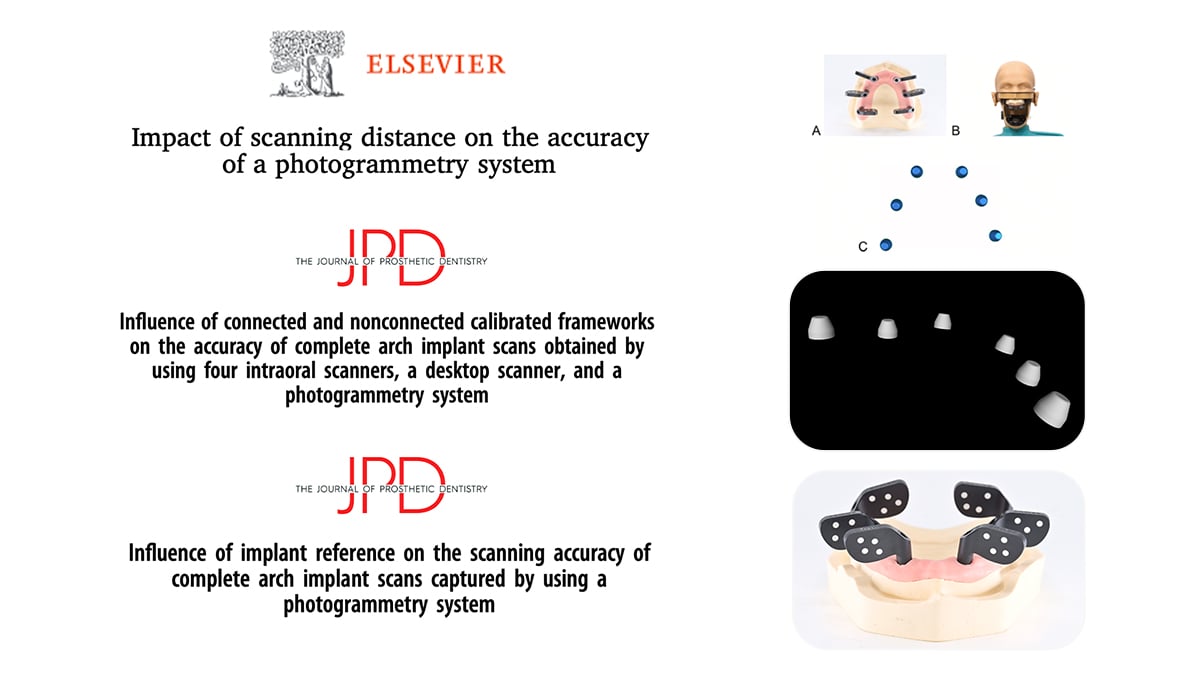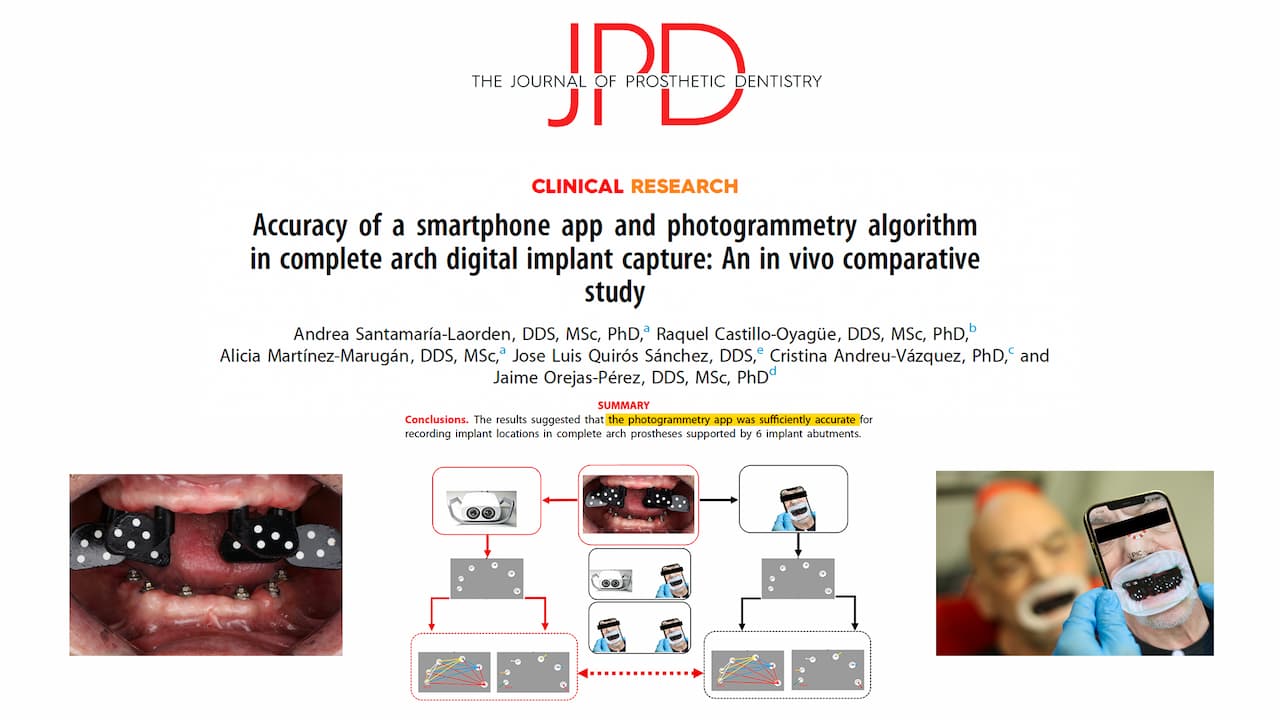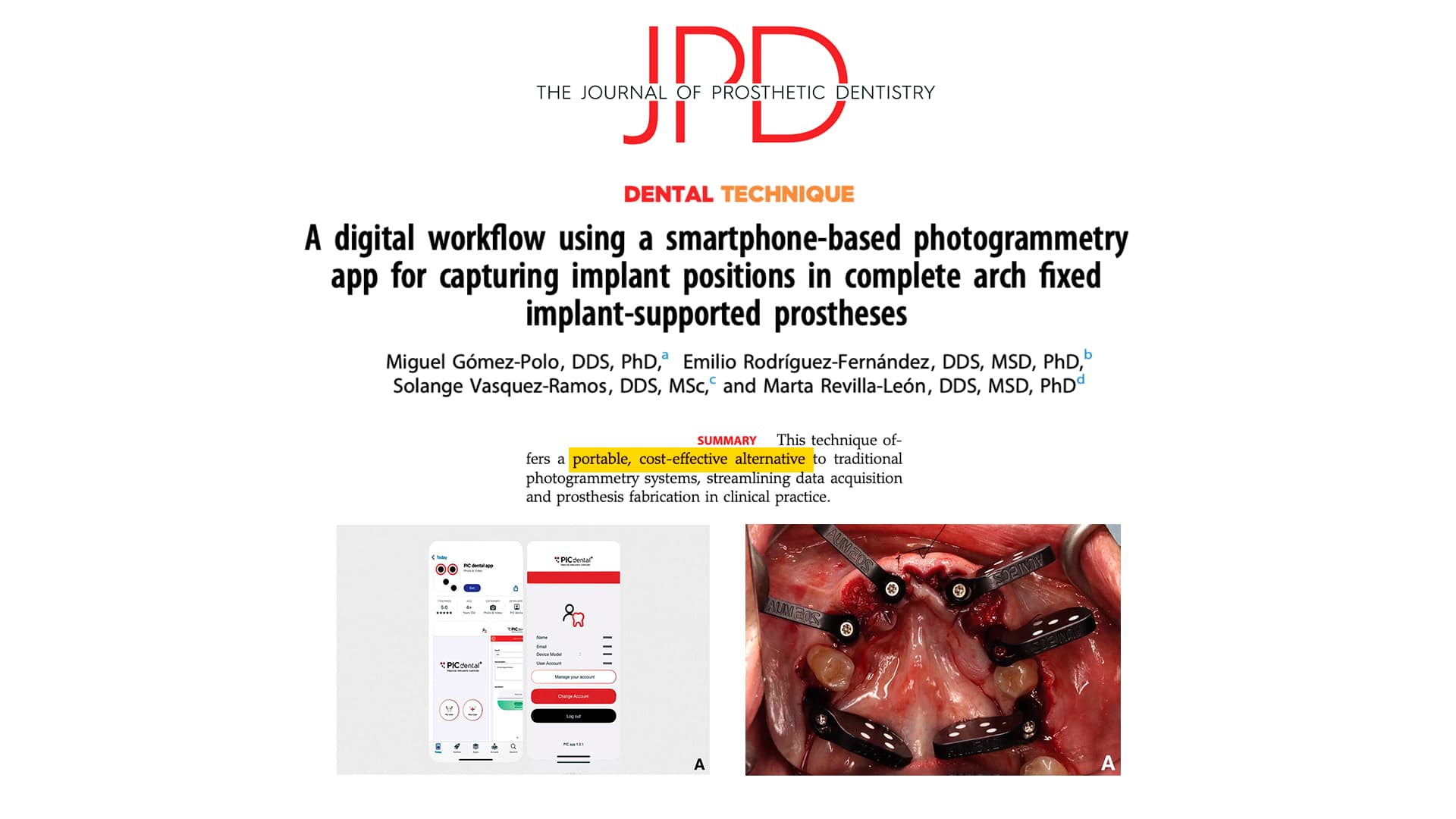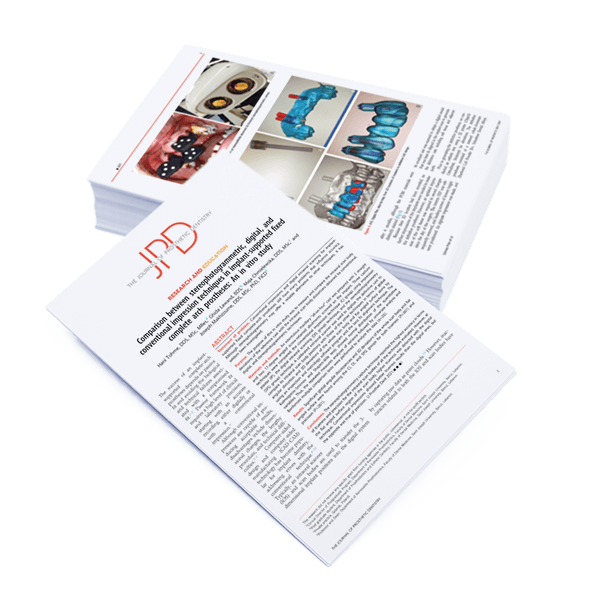 Dentists have a duty to stay current with new advancements to provide the best possible patient care, as new technology and techniques become available. Peer-reviewed scientific research is a cornerstone for validation of new technologies because it provides a rigorous, independent, and evidence-based evaluation that is scrutinized by experts.
Dentists have a duty to stay current with new advancements to provide the best possible patient care, as new technology and techniques become available. Peer-reviewed scientific research is a cornerstone for validation of new technologies because it provides a rigorous, independent, and evidence-based evaluation that is scrutinized by experts.
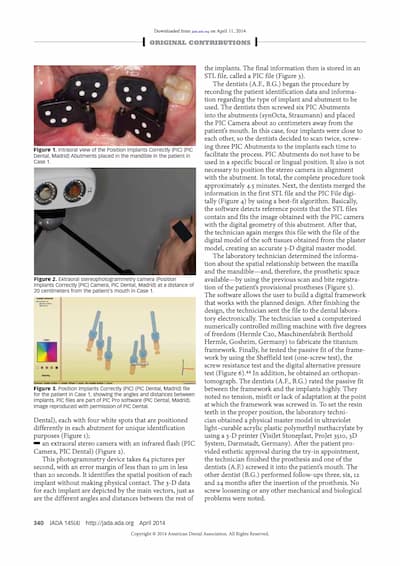 PIC dental has a long history of scientific validation of our solutions: did you know the first ever peer-reviewed study of the PIC system was published 10 years ago, in April of 2014, in The Journal of the American Dental Association (JADA)? This in vivo study used the PIC system Legacy in three different full arch implant restorations, which all resulted in a passive fit and no complications in follow-up appointments (Pradíes et al., 2014).
PIC dental has a long history of scientific validation of our solutions: did you know the first ever peer-reviewed study of the PIC system was published 10 years ago, in April of 2014, in The Journal of the American Dental Association (JADA)? This in vivo study used the PIC system Legacy in three different full arch implant restorations, which all resulted in a passive fit and no complications in follow-up appointments (Pradíes et al., 2014).
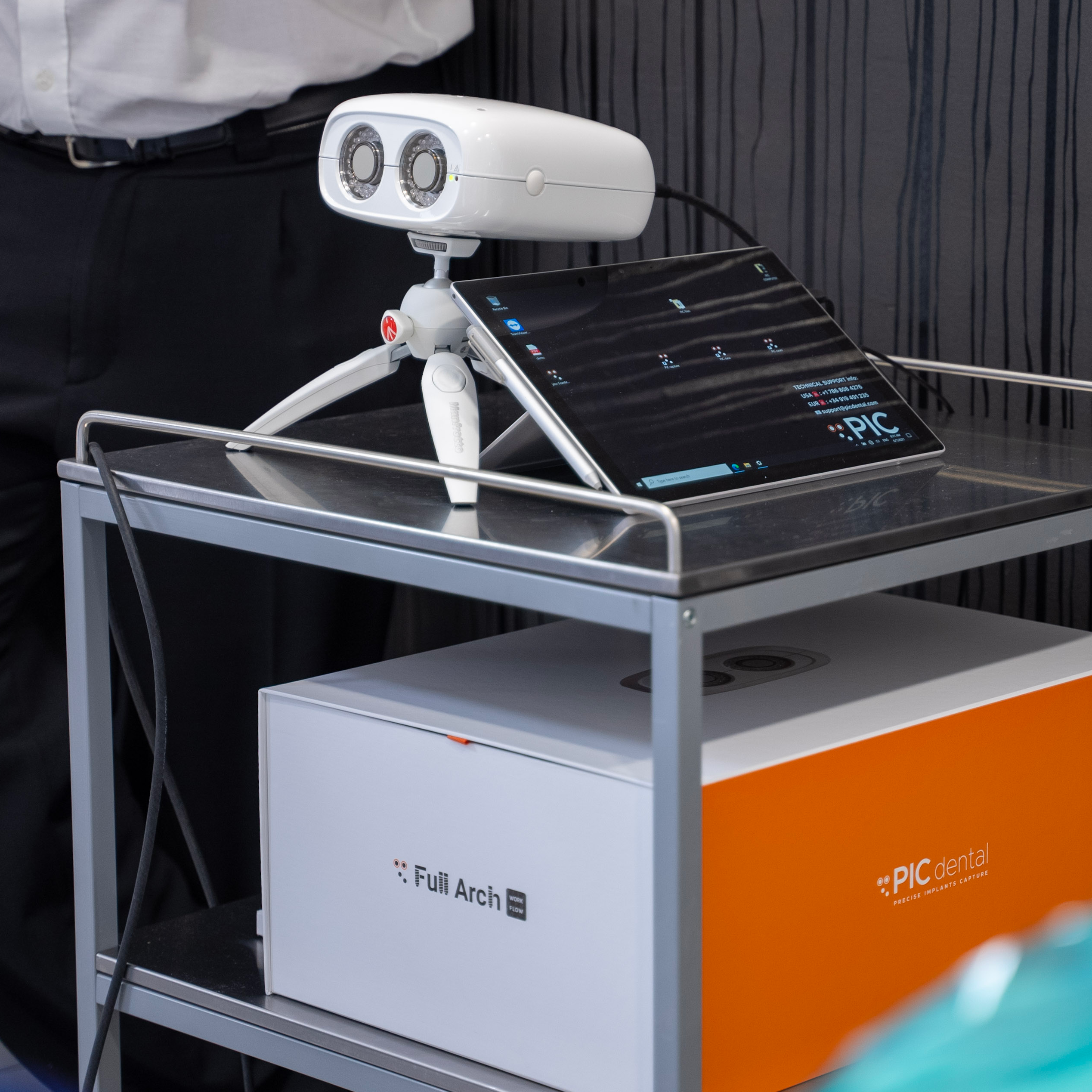 The PIC system Legacy that was used for the study was the original generation of the PIC system first released in 2009. The Legacy version is no longer available for sale since it was replaced by a new PIC system generation back in 2022, featuring a new PIC camera with Micron Vision camera modules that increase the accuracy.
The PIC system Legacy that was used for the study was the original generation of the PIC system first released in 2009. The Legacy version is no longer available for sale since it was replaced by a new PIC system generation back in 2022, featuring a new PIC camera with Micron Vision camera modules that increase the accuracy.
Every year since that first study, new research has been published about the PIC system Legacy: today, the total body of independent research on PIC system Legacy contains over 26 peer-reviewed scientific publications so far (full list on our Evidence page). The findings consistently demonstrate, both in vivo and in vitro, that PIC system’s accuracy (both trueness and precision) is well below the acceptable discrepancies for a good passive fit.
Just in the first quarter of 2024, 3 (!) new in vitro studies have been published about the PIC system Legacy’s accuracy in the Journal of Dentistry and the Journal of Prosthetic Dentistry. As a reminder, the concept of accuracy in dentistry research commonly follows the ISO 5725-1 standard’s definition, where it is comprised of trueness (how close a measurement is to the true result) and precision (the conformity of multiple repeated measurements).
%20-%20Abril/2024-04%20-%203%20new%20studies%20of%20PIC%20system%20Legacy/1%20-%20Effect%20of%20scanning%20distance%20on%20accuracy.png) One of the in vitro studies compared the effects of the measuring distance on the accuracy of PIC system Legacy. It found that the official recommended capture distance of 30cm provides the best trueness compared to other distances, with a maximum discrepancy of 10µm, while precision stayed consistent at all distances tested with no significant discrepancies (Revilla-León et al., 2024a).
One of the in vitro studies compared the effects of the measuring distance on the accuracy of PIC system Legacy. It found that the official recommended capture distance of 30cm provides the best trueness compared to other distances, with a maximum discrepancy of 10µm, while precision stayed consistent at all distances tested with no significant discrepancies (Revilla-León et al., 2024a).
 This effect was observed by PIC dental’s team in the past, and to mitigate it, the new 2022 PIC suite software generation implemented a feature to guide the user to the optimal range for an accurate measurement, which provides even better results together with the increased accuracy of the new PIC camera with Micron Vision camera modules.
This effect was observed by PIC dental’s team in the past, and to mitigate it, the new 2022 PIC suite software generation implemented a feature to guide the user to the optimal range for an accurate measurement, which provides even better results together with the increased accuracy of the new PIC camera with Micron Vision camera modules.
Another in vitro study evaluated the effect of reference choice on the PIC system Legacy's accuracy. The references (a concept from the PIC suite software) are the user-selected implant positions used by PIC suite’s measuring algorithms as anchors for the calculations of distances and angulations. The strategy for choosing the right references depending on the clinical case is taught in PIC pro trainings.
The older PIC suite Legacy software used in this study allowed the user to complete a capture with a minimum of one reference (and a maximum of three). The study performed a series of measurements of the same model, comparing the choice of one reference in different positions, and observed a difference of up to 6±3µm (trueness ±precision) between 3 different options (Revilla-León et al., 2024b).
%20-%20Abril/2024-04%20-%203%20new%20studies%20of%20PIC%20system%20Legacy/2%20-%20Effect%20of%20reference%20on%20accuracy.png)
This is another effect that PIC dental’s team also observed in the Legacy generation: the position, as well as the number of references could have an effect on accuracy, with a single reference providing the worst performance. For this reason, a change was introduced in the 2022 generation of PIC suite: it no longer allows to proceed with a capture unless there is a minimum of 2 references enabled.
%20-%20Abril/2024-04%20-%203%20new%20studies%20of%20PIC%20system%20Legacy/Legacy%20PIC%20system%201%20reference%20(white).jpg?width=336&height=211&name=Legacy%20PIC%20system%201%20reference%20(white).jpg)
%20-%20Abril/2024-04%20-%203%20new%20studies%20of%20PIC%20system%20Legacy/New%20PIC%20system%202%20references.png)
PIC suite Legacy (left) allowed a capture to proceed with even a single reference enabled. The new PIC suite (right) requires a minimum of 2 and uses a traffic light color code to visually guide the user to setting the recommended number of 3 references for the best possible results.
While this study only evaluated the accuracy with a single reference enabled, we are very excited to see a peer-reviewed study empirically validate a software improvement that ultimately ensures the best possible accuracy of the PIC system. We are looking forward to how the new PIC system hardware and software will compare to these results in future research.
The latest in vitro study compared the use of connected and non-connected calibrated frameworks (measured with intraoral scanners and a laboratory scanner) as well as a PIC system Legacy measurement in a model with 6 implants. The study concluded that “The photogrammetry system and the intraoral scans captured by using the calibrated framework obtained the best linear and angular trueness and precision among all the digitizing methods analyzed” (Revilla-León et al., 2024c).
%20-%20Abril/2024-04%20-%203%20new%20studies%20of%20PIC%20system%20Legacy/3%20-%20Linear%20discrepancies%20connected%20and%20nonconnected%20frameworks.png?width=1122&height=816&name=3%20-%20Linear%20discrepancies%20connected%20and%20nonconnected%20frameworks.png)
While promising for calibrated frameworks, Revilla-León et al. noted the limitations of “the laboratory conditions under which the digital scans were captured.“ As previous in vivo research of the PIC system Legacy has discussed, "The majority of studies that evaluate IOSs are performed in vitro and, therefore, lack the challenges that the IOSs face in vivo” (Orejas-Perez et al., 2022).
In vitro conditions omit the variable factors that mostly affect intraoral scanners’ accuracy, such as the operator's skill and scanning strategy, the number and distance between implants, the mouth opening of the patient, ambient light, saliva, and others. The PIC system is designed to deliver consistent clinical results in vivo regardless of these factors.
These studies feature the PIC system Legacy generation, originally released in 2009. While it’s no longer available for sale, it continues to be the most evidence-supported dental photogrammetry for a guaranteed passive fit that is still used daily by dental practices all around the world.
To support our community, the newest PIC system form factors were made to be backwards compatible with the Legacy PIC camera, allowing many customers to upgrade their software and hardware at a fraction of the cost and enjoy most of the new features (learn more).
%20-%20Abril/2024-04%20-%203%20new%20studies%20of%20PIC%20system%20Legacy/BYL23%20image.png?width=671&height=214&name=BYL23%20image.png)
We eagerly anticipate the scientific community’s findings on the new PIC system and the new PIC camera with Micron Vision camera modules as an improved solution that provides even more accurate and reliable full arch implant restorations.
SOURCES
-
Katsoulis, J., Takeichi, T., Sol Gaviria, A., Peter, L., & Katsoulis, K. (2017). Misfit of implant prostheses and its impact on clinical outcomes. Definition, assessment and a systematic review of the literature. Eur J Oral Implantol, 10(Suppl 1), 121-138.
-
Orejas-Perez, J.; Gimenez- Gonzalez, B.; Ortiz-Collado, I.; Thuissard, I.J.; Santamaria-Laorden, A. (2022). In Vivo Complete-Arch Implant Digital Impressions: Comparison of the Precision of Three Optical Impression Systems. Int. J. Environ. Res. Public Health 2022, 19, 4300. https://doi.org/10.3390/ijerph19074300
-
Pradíes, G., Ferreiroa, A., Özcan, M., Giménez, B., & Martínez-Rus, F. (2014). Using stereophotogrammetric technology for obtaining intraoral digital impressions of implants. The Journal of the American Dental Association, 145(4), 338-344. https://doi.org/10.14219/jada.2013.45
-
Revilla-León, M., Gómez-Polo, M., Drone, M., Barmak, A. B., Guinot-Barona, C., Att, W., ... & Pérez-Barquero, J. A. (2024a). Impact of scanning distance on the accuracy of a photogrammetry system. Journal of Dentistry, 142, 104854. https://doi.org/10.1016/j.jdent.2024.104854
-
Revilla-León, M., Gómez-Polo, M., Drone, M., Barmak, A. B., Att, W., Kois, J. C., & Pérez-Barquero, J. A. (2024b). Influence of implant reference on the scanning accuracy of complete arch implant scans captured by using a photogrammetry system. The Journal of Prosthetic Dentistry. https://doi.org/10.1016/j.prosdent.2024.01.008
-
Revilla-León, M., Barmak, A. B., Lanis, A., & Kois, J. C. (2024c). Influence of connected and nonconnected calibrated frameworks on the accuracy of complete arch implant scans obtained by using four intraoral scanners, a desktop scanner, and a photogrammetry system. The Journal of Prosthetic Dentistry. https://doi.org/10.1016/j.prosdent.2024.01.017
